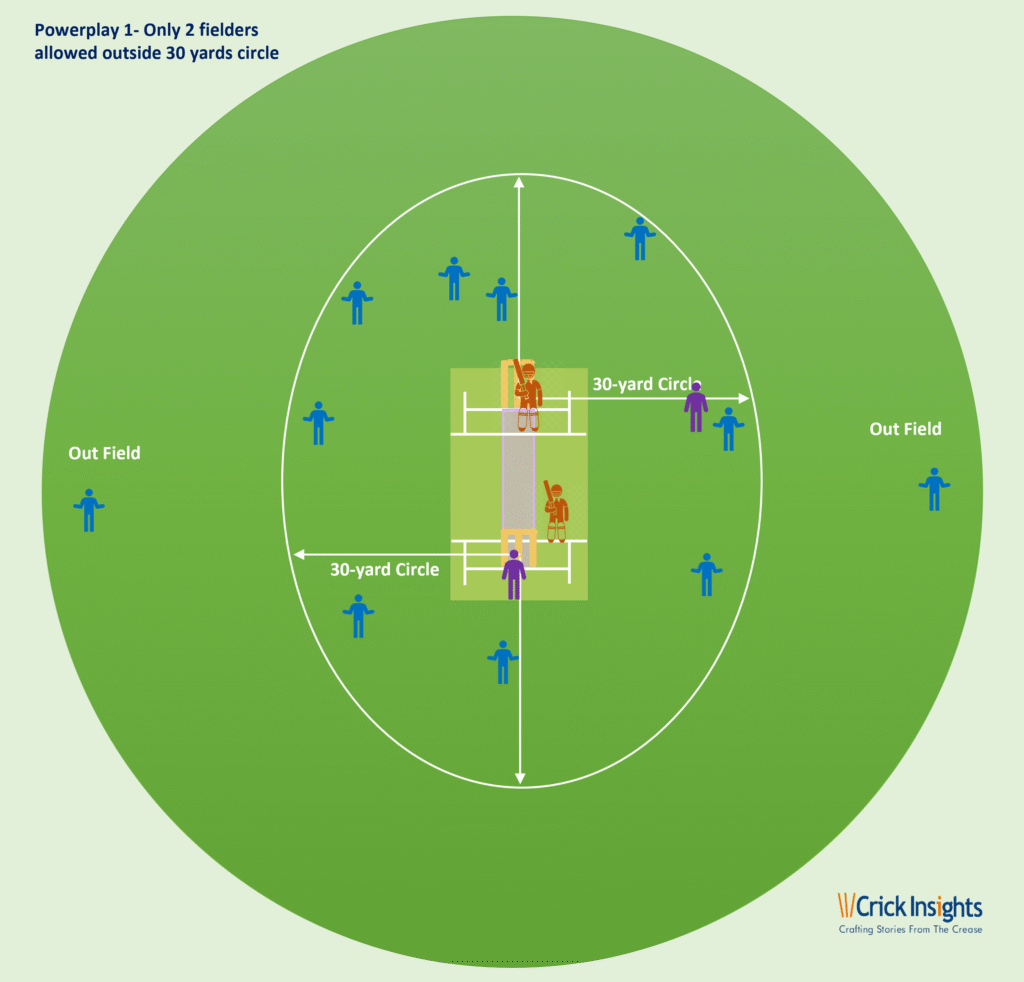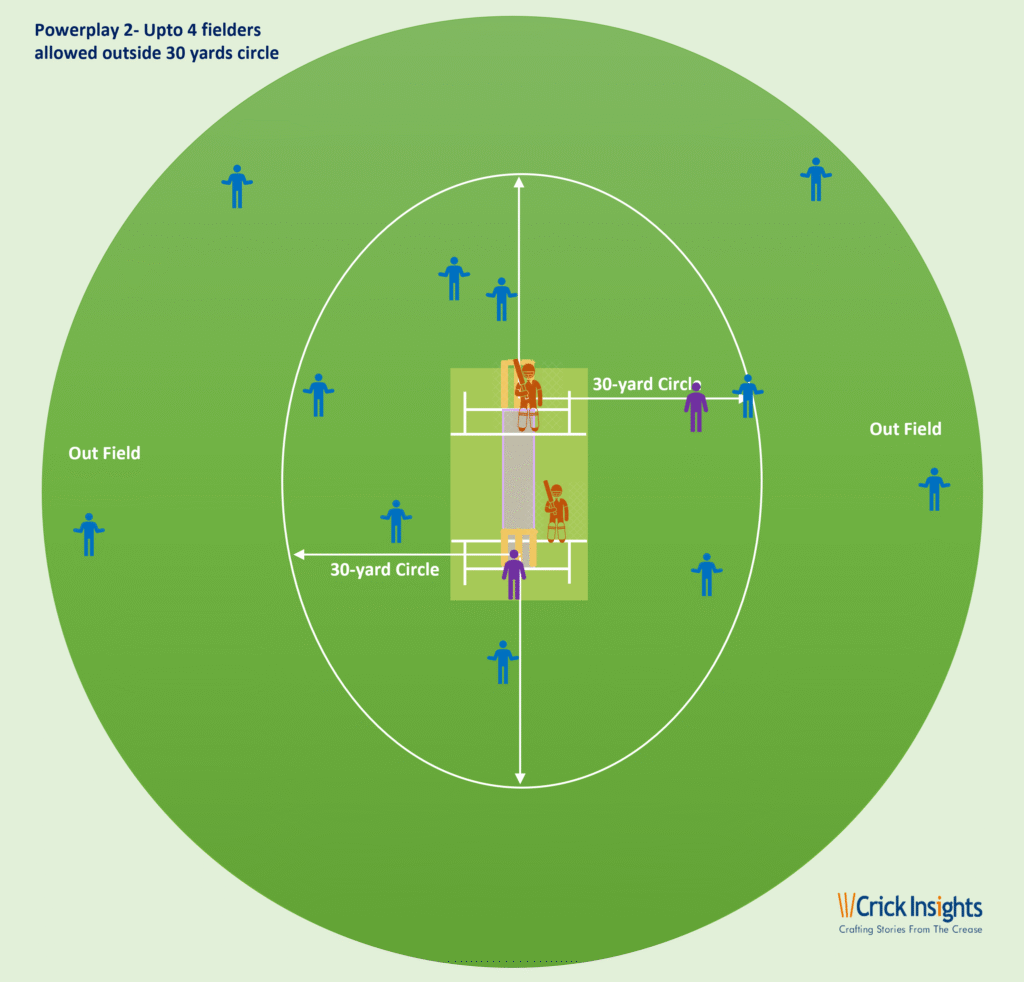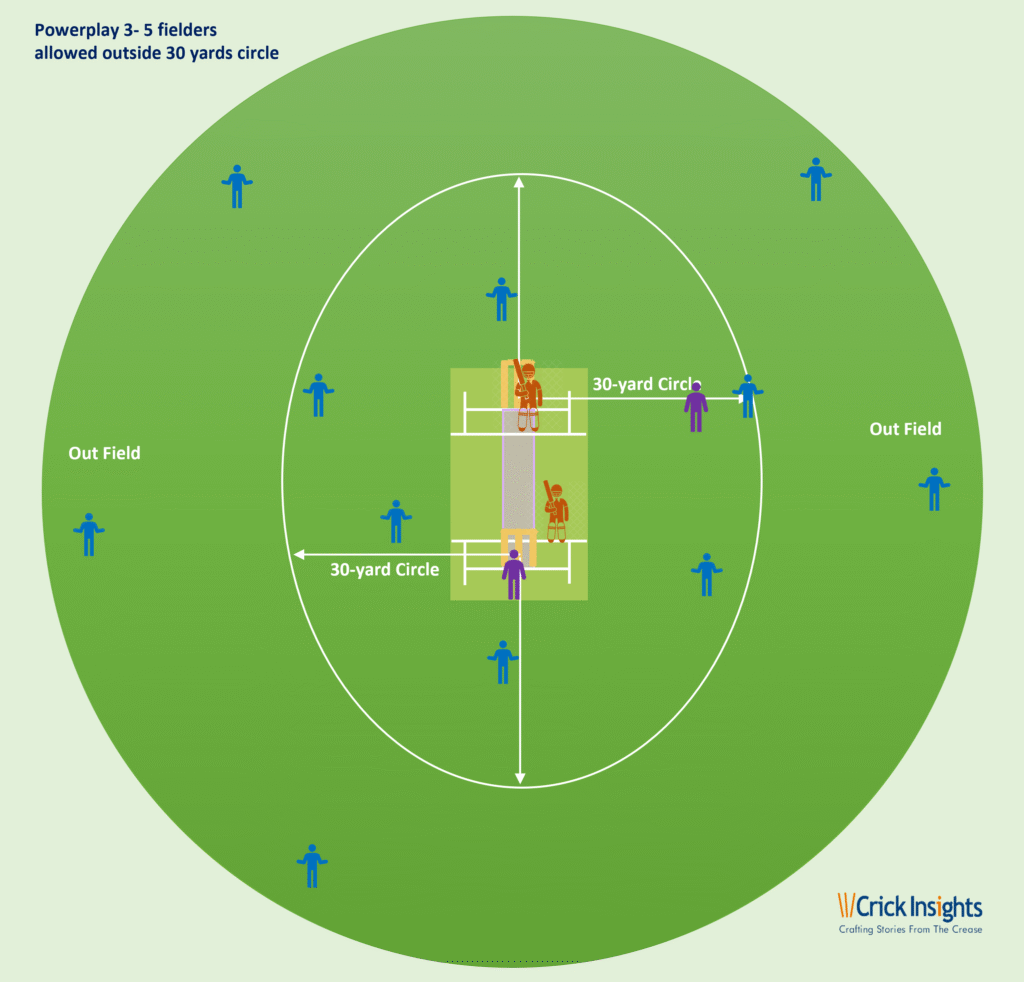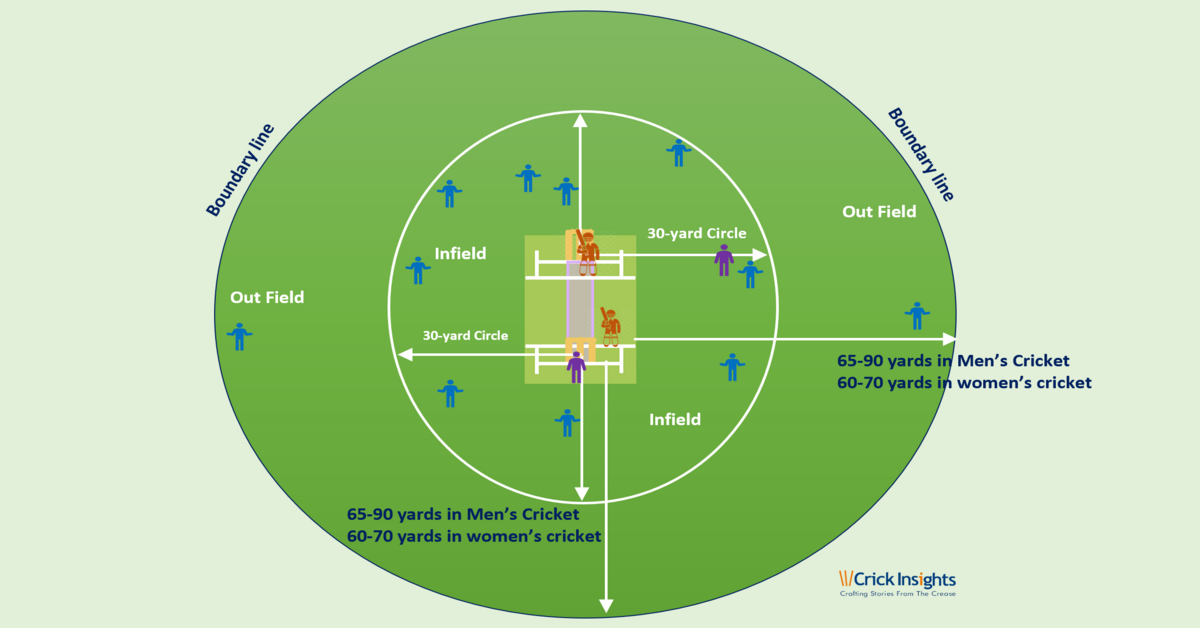Cricket Powerplays Explained: ODI vs T20 Rules, Strategy & Fielding Restrictions
Introduction to Powerplay in Cricket?
Powerplays are crucial segments in limited-overs cricket that place fielding restrictions on the bowling team to create a more exciting contest between bat and ball. These mandatory rules shape the momentum of a match and dictate how teams strategize, especially in the first half of their innings. The rules dictate how many fielders can be placed outside the 30-yard circle during specific overs.
Powerplay rules were first introduced in One Day Internationals (ODIs) in 2005 by the International Cricket Council (ICC). The initial concept included:
- A mandatory 10-over powerplay at the start of the innings.
- Two optional 5-over powerplays that could be chosen by the bowling and batting sides, respectively.
These rules have since evolved over time for better balance between bat and ball, eventually leading to the current fixed three-phase structure in ODIs and the single-phase model in T20s.
Whether you’re watching a 50-over ODI or a 20-over T20, understanding how powerplays work helps you appreciate the tactical depth of the game.
ODI Powerplay Rules
In One Day Internationals (ODIs), the 50-over innings is divided into three powerplay phases:



1st Powerplay (Overs 1–10):
- Only 2 fielders allowed outside the 30-yard circle.
- Designed for aggressive batting starts and high scoring.
2nd Powerplay (Overs 11–40):
- Up to 4 fielders allowed outside the 30-yard circle.
- A balance between attack and consolidation.
- All 30 overs are considered mandatory — teams do not choose when to take it.
3rd Powerplay (Overs 41–50):
- Allows 5 fielders outside the 30-yard circle.
- Intended to support death-over bowling and restrict late-innings hitting.
Note: Powerplays in ODIs are automatically applied and not requested by batting or bowling sides after July 2015.
T20 Powerplay Rules
In T20 Internationals:
- The first 6 overs (1–6) form the only powerplay.
- Only 2 fielders are permitted outside the 30-yard circle.
- From overs 7–20, regular fielding rules apply, allowing 5 fielders outside the circle.
There is no second or third powerplay in T20s.
Key Differences: ODI vs T20 Fielding Restrictions in Powerplays
| Feature | ODI | T20 |
|---|---|---|
| Total Powerplays | 3 (1–10 , 11–40, 41–50 overs) | 1 (1–6 overs) |
| Fielders outside circle | 2 (PP1), 4 (PP2), 5 (PP3) | 2 (PP), 5 (7- 20 overs) |
| Overs per Powerplay | 10 (PP1), 30 (PP2), 10 (PP3) | 6 |
| Strategic choices | No control over timing | No control over timing |
Strategic Use of Powerplays Both in Batting and Fielding Strategy in Cricket
Batting Strategy:
- In ODIs, batters aim to capitalize during the first 10 overs and then pace the innings during Powerplay 2 and accelerate again in Powerplay 3.
- In T20s, explosive starts are vital due to the short powerplay, making early wickets a big setback.
Bowling Strategy:
- Captains may employ attacking fields and aggressive bowlers during early overs.
- Bowlers target swing and seam in Powerplay 1 (ODIs) and short-ball traps in T20s.
- Death-over specialists are reserved for Power Play 3 in ODIs.
Iconic Moments in Powerplays
- Virender Sehwag’s blitz vs New Zealand (2009) – Utilized Power Play 1 to put India ahead early.
- Bhuvneshwar Kumar’s swing spell vs England (2014 T20I) – Demonstrated powerplay bowling mastery.
- England’s aggressive Power Play 1 tactics in the 2019 ODI World Cup – Revolutionized modern batting.
FAQs: Powerplay Rules in Cricket
1. What is Powerplay in cricket?
A Powerplay is a set of overs in limited-overs cricket during which specific fielding restrictions are applied to encourage more aggressive batting and higher scoring.
2. How many Powerplays are there in ODIs?
There are three Powerplays in One Day Internationals (ODIs):
- Powerplay 1 (P1): Overs 1–10
- Powerplay 2 (P2): Overs 11–40
- Powerplay 3 (P3): Overs 41–50
3. How many fielders are allowed outside the 30-yard circle during each Powerplay?
- P1 (Overs 1–10): Only 2 fielders allowed outside the 30-yard circle
- P2 (Overs 11–40): Up to 4 fielders allowed outside the circle
- P3 (Overs 41–50): Up to 5 fielders allowed outside the circle
4. Who decides when to take the Powerplay?
Powerplay in cricket are now automatically enforced as per ICC rules. Teams no longer choose when to take them, unlike the earlier system.
5. Was there ever a time when teams could choose their Powerplay?
Yes. Prior to July 2015, teams could choose Batting and Bowling Powerplays. This rule was removed to simplify gameplay and avoid confusion.
6. Do all 50 overs fall under Powerplay restrictions?
Yes, the entire 50 overs are divided into three Powerplays with different fielding rules. No overs are outside Powerplay in ODIs.
7. How many powerplays are there in T20 Internationals?”
There’s only one Powerplay in T20 Matches:
- Overs 1–6: Only 2 fielders are allowed outside the 30-yard circle during powerplay between overs 1 to 6.
8. What led to the introduction of Powerplays in cricket?”
Powerplays were introduced in limited-overs cricket to increase excitement and balance the contest between bat and ball. Before powerplays, captains could place most fielders on the boundary, making run-scoring difficult and matches less thrilling. By enforcing fielding restrictions during specific overs, powerplays encourage aggressive batting, dynamic field placements, and strategic bowling, resulting in more competitive and entertaining cricket.
9. What happens if a team violates fielding restrictions during a Powerplay?
The umpire will call a no-ball if more fielders are outside the circle than allowed, leading to an extra run and a free hit for the batting side.
10. Do Powerplays apply in Test cricket?
No, Powerplays are exclusive to limited-overs formats (ODIs and T20s). Test cricket does not have Powerplay rules.
Conclusion
Powerplays add layers of drama and strategy to cricket, especially in the fast-paced world of ODIs and T20s. By understanding their structure and impact, fans can gain deeper insights into why teams take certain decisions and how matches shift momentum.
What do you think? Has the introduction of powerplays led to teams scoring more consistently, with 300+ totals becoming the new norm in ODIs?

